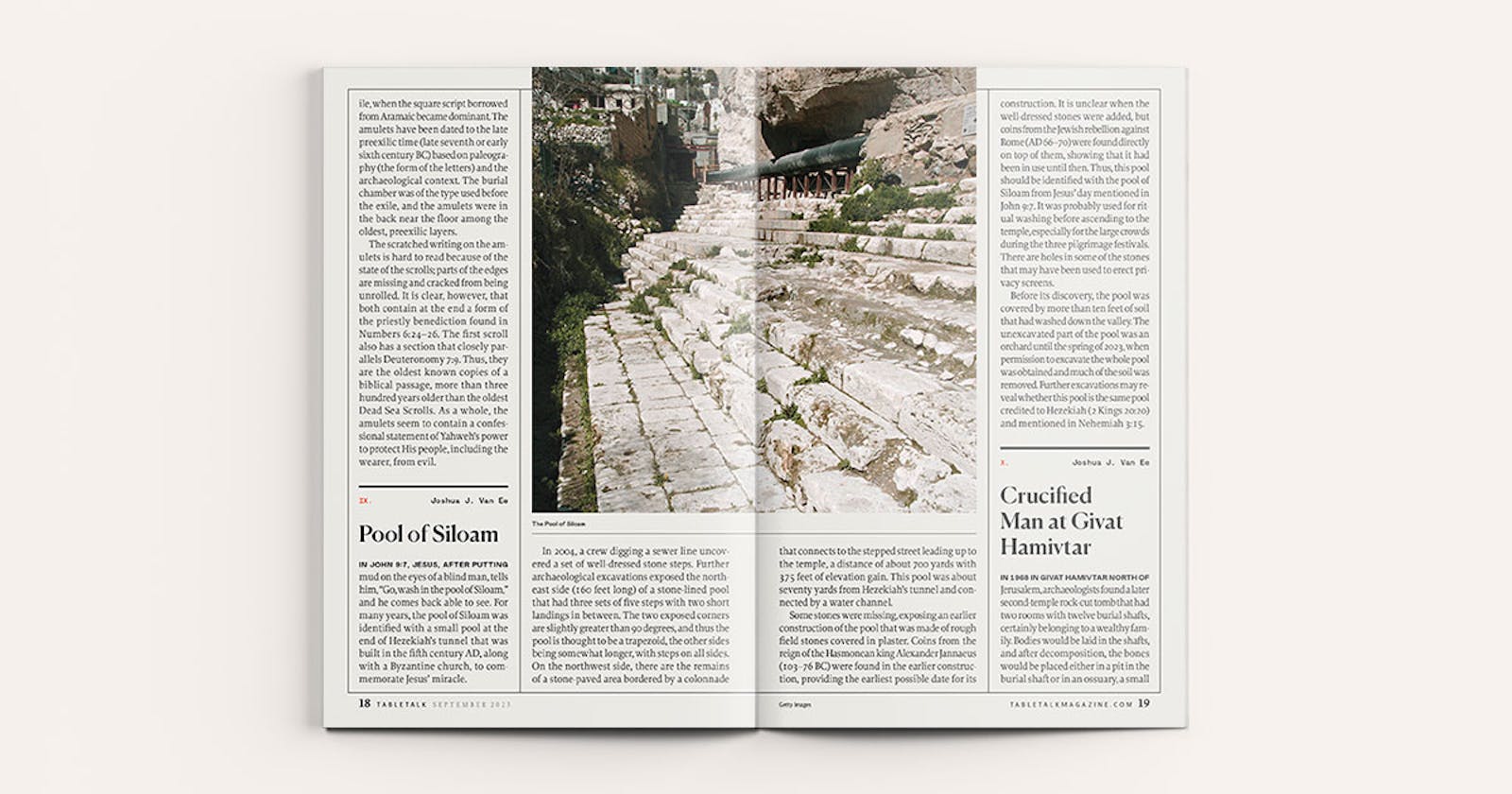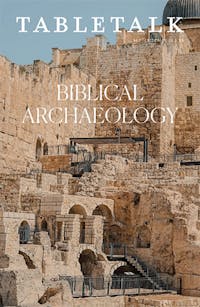
Request your free, three-month trial to Tabletalk magazine. You’ll receive the print issue monthly and gain immediate digital access to decades of archives. This trial is risk-free. No credit card required.
Try Tabletalk NowAlready receive Tabletalk magazine every month?
Verify your email address to gain unlimited access.
In John 9:7, Jesus, after putting mud on the eyes of a blind man, tells him, “Go, wash in the pool of Siloam,” and he comes back able to see. For many years, the pool of Siloam was identified with a small pool at the end of Hezekiah’s tunnel that was built in the fifth century AD, along with a Byzantine church, to commemorate Jesus’ miracle.
In 2004, a crew digging a sewer line uncovered a set of well-dressed stone steps. Further archaeological excavations exposed the northeast side (160 feet long) of a stone-lined pool that had three sets of five steps with two short landings in between. The two exposed corners are slightly greater than 90 degrees, and thus the pool is thought to be a trapezoid, the other sides being somewhat longer, with steps on all sides. On the northwest side, there are the remains of a stone-paved area bordered by a colonnade that connects to the stepped street leading up to the temple, a distance of about 700 yards with 375 feet of elevation gain. This pool was about seventy yards from Hezekiah’s tunnel and connected by a water channel.

Some stones were missing, exposing an earlier construction of the pool that was made of rough field stones covered in plaster. Coins from the reign of the Hasmonean king Alexander Jannaeus (103–76 BC) were found in the earlier construction, providing the earliest possible date for its construction. It is unclear when the well-dressed stones were added, but coins from the Jewish rebellion against Rome (AD 66–70) were found directly on top of them, showing that it had been in use until then. Thus, this pool should be identified with the pool of Siloam from Jesus’ day mentioned in John 9:7. It was probably used for ritual washing before ascending to the temple, especially for the large crowds during the three pilgrimage festivals. There are holes in some of the stones that may have been used to erect privacy screens.
Before its discovery, the pool was covered by more than ten feet of soil that had washed down the valley. The unexcavated part of the pool was an orchard until the spring of 2023, when permission to excavate the whole pool was obtained and much of the soil was removed. Further excavations may reveal whether this pool is the same pool credited to Hezekiah (2 Kings 20:20) and mentioned in Nehemiah 3:15.
